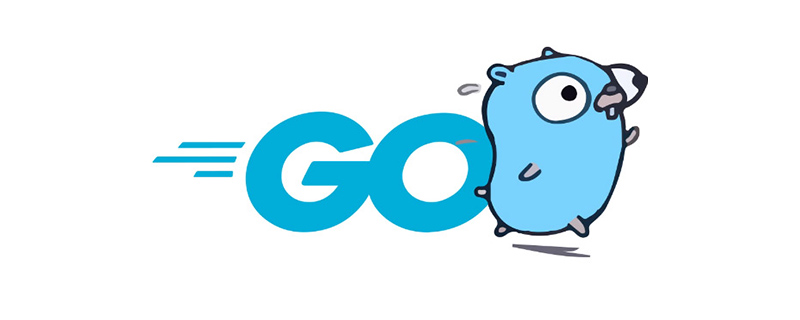Go 언어는 정규식을 사용하여 웹페이지 텍스트를 추출합니다.
- 尚앞으로
- 2020-01-08 17:47:495350검색

예: 문자열 1000abcd123에서 앞뒤의 두 숫자를 찾으세요.
예 1: 이 문자열 일치의 예
package main
import(
"fmt"
"regexp"
)
var digitsRegexp = regexp.MustCompile(`(\d+)\D+(\d+)`)
func main(){
someString:="1000abcd123"
fmt.Println(digitsRegexp.FindStringSubmatch(someString))
}위 코드 출력:
[1000abcd123 1000 123]
예 2: 명명된 정규 표현식 사용
package main
import(
"fmt"
"regexp"
)
var myExp=regexp.MustCompile(`(?P<first>\d+)\.(\d+).(?P<second>\d+)`)
func main(){
fmt.Printf("%+v",myExp.FindStringSubmatch("1234.5678.9"))
}위 코드 출력, 모든 일치 항목이 출력됨:
[1234.5678.9 1234 5678 9]
The Named 여기서 정규 표현식의 이름을 지정하는 그룹 캡처(?P
예 3: 모든 이름 지정 정보를 가져와 사용하는 메서드로 정규식 클래스를 확장합니다.
package main
import(
"fmt"
"regexp"
)
//embed regexp.Regexp in a new type so we can extend it
type myRegexp struct{
*regexp.Regexp
}
//add a new method to our new regular expression type
func(r *myRegexp)FindStringSubmatchMap(s string) map[string]string{
captures:=make(map[string]string)
match:=r.FindStringSubmatch(s)
if match==nil{
return captures
}
for i,name:=range r.SubexpNames(){
//Ignore the whole regexp match and unnamed groups
if i==0||name==""{
continue
}
captures[name]=match[i]
}
return captures
}
//an example regular expression
var myExp=myRegexp{regexp.MustCompile(`(?P<first>\d+)\.(\d+).(?P<second>\d+)`)}
func main(){
mmap:=myExp.FindStringSubmatchMap("1234.5678.9")
ww:=mmap["first"]
fmt.Println(mmap)
fmt.Println(ww)
}
위 코드의 출력:
map[first:1234 second:9] 1234
예제 4, 번호 제한 정보를 가져와 지도에 기록합니다.
package main
import(
"fmt"
iconv "github.com/djimenez/iconv-go"
"io/ioutil"
"net/http"
"os"
"regexp"
)
// embed regexp.Regexp in a new type so we can extend it
type myRegexp struct{
*regexp.Regexp
}
// add a new method to our new regular expression type
func(r *myRegexp)FindStringSubmatchMap(s string)[](map[string]string){
captures:=make([](map[string]string),0)
matches:=r.FindAllStringSubmatch(s,-1)
if matches==nil{
return captures
}
names:=r.SubexpNames()
for _,match:=range matches{
cmap:=make(map[string]string)
for pos,val:=range match{
name:=names[pos]
if name==""{
continue
}
/*
fmt.Println("+++++++++")
fmt.Println(name)
fmt.Println(val)
*/
cmap[name]=val
}
captures=append(captures,cmap)
}
return captures
}
// 抓取限号信息的正则表达式
var myExp=myRegexp{regexp.MustCompile(`自(?P<byear>[\d]{4})年(?P<bmonth>[\d]{1,2})月(?P<bday>[\d]{1,2})日至(?P<eyear>[\d]{4})年(?P<emonth>[\d]{1,2})月(?P<eday>[\d]{1,2})日,星期一至星期五限行机动车车牌尾号分别为:(?P<n11>[\d])和(?P<n12>[\d])、(?P<n21>[\d])和(?P<n22>[\d])、(?P<n31>[\d])和(?P<n32>[\d])、(?P<n41>[\d])和(?P<n42>[\d])、(?P<n51>[\d])和(?P<n52>[\d])`)}
func ErrorAndExit(err error){
fmt.Fprintln(os.Stderr,err)
os.Exit(1)
}
func main(){
response,err:=http.Get("http://www.bjjtgl.gov.cn/zhuanti/10weihao/index.html")
defer response.Body.Close()
if err!=nil{
ErrorAndExit(err)
}
input,err:=ioutil.ReadAll(response.Body)
if err!=nil{
ErrorAndExit(err)
}
body :=make([]byte,len(input))
iconv.Convert(input,body,"gb2312","utf-8")
mmap:=myExp.FindStringSubmatchMap(string(body))
fmt.Println(mmap)
}위 코드 출력:
[map[n32:0 n22:9 emonth:7 n11:3 n41:1 n21:4 n52:7 bmonth:4 n51:2 bday:9 n42:6 byear:2012 eday:7 eyear:2012 n12:8 n31:5] map[emonth:10 n41:5 n52:6 n31:4 byear:2012 n51:1 eyear:2012 n32:9 bmonth:7 n22:8 bday:8 n11:2 eday:6 n42:0 n21:3 n12:7] map[bday:7 n51:5 n22:7 n31:3 eday:5 n32:8 byear:2012 bmonth:10 emonth:1 eyear:2013 n11:1 n12:6 n52:0 n21:2 n42:9 n41:4] map[eyear:2013 byear:2013 n22:6 eday:10 bmonth:1 n41:3 n32:7 n31:2 n21:1 n11:5 bday:6 n12:0 n51:4 n42:8 emonth:4 n52:9]]
더 많은 Go 언어 지식을 보려면 PHP 중국어 웹사이트 go 언어 튜토리얼 칼럼을 주목하세요.
위 내용은 Go 언어는 정규식을 사용하여 웹페이지 텍스트를 추출합니다.의 상세 내용입니다. 자세한 내용은 PHP 중국어 웹사이트의 기타 관련 기사를 참조하세요!
성명:
이 기사는 cnblogs.com에서 복제됩니다. 침해가 있는 경우 admin@php.cn으로 문의하시기 바랍니다. 삭제

